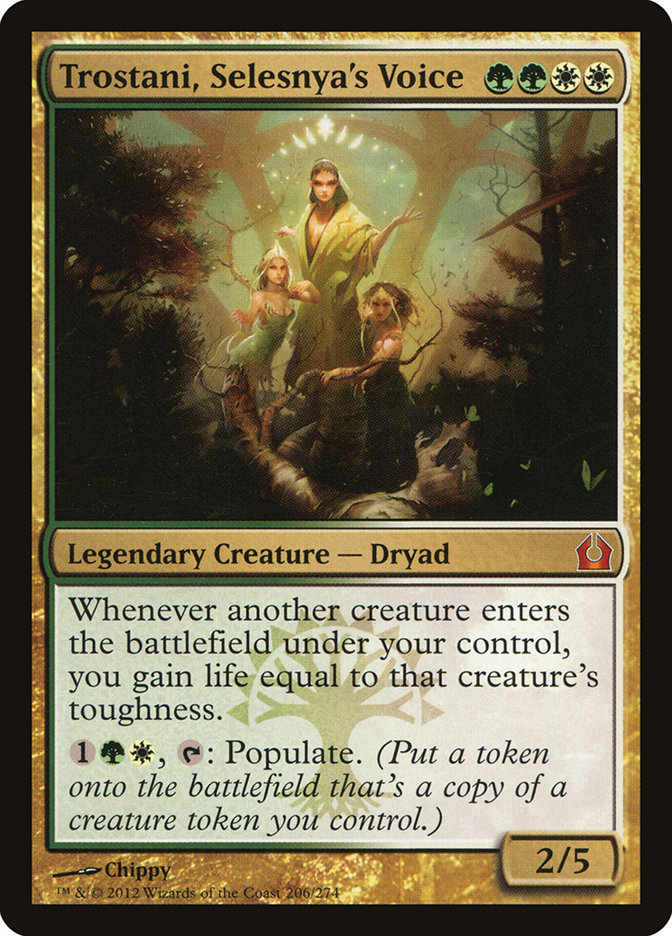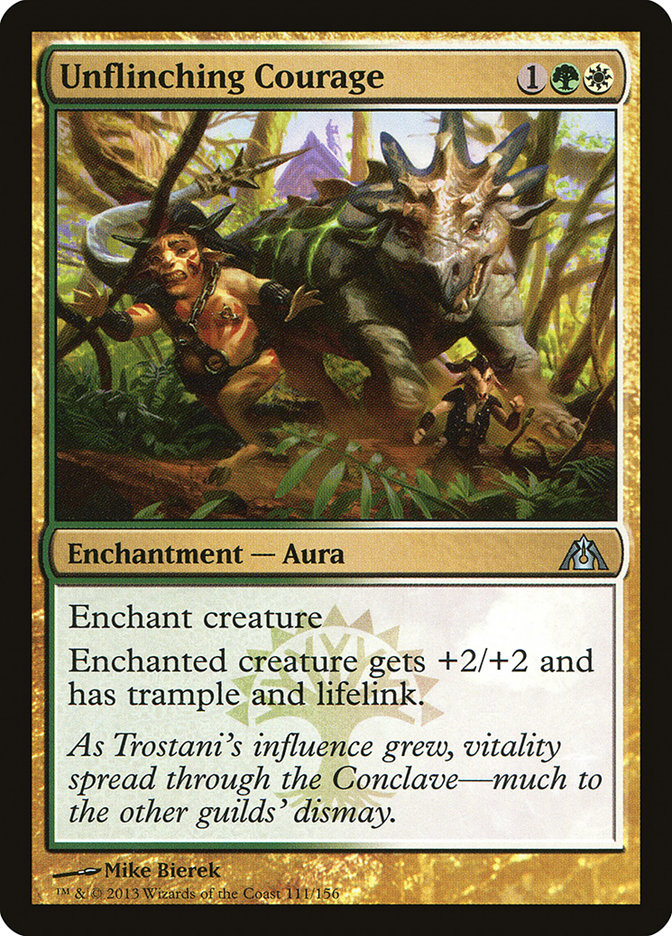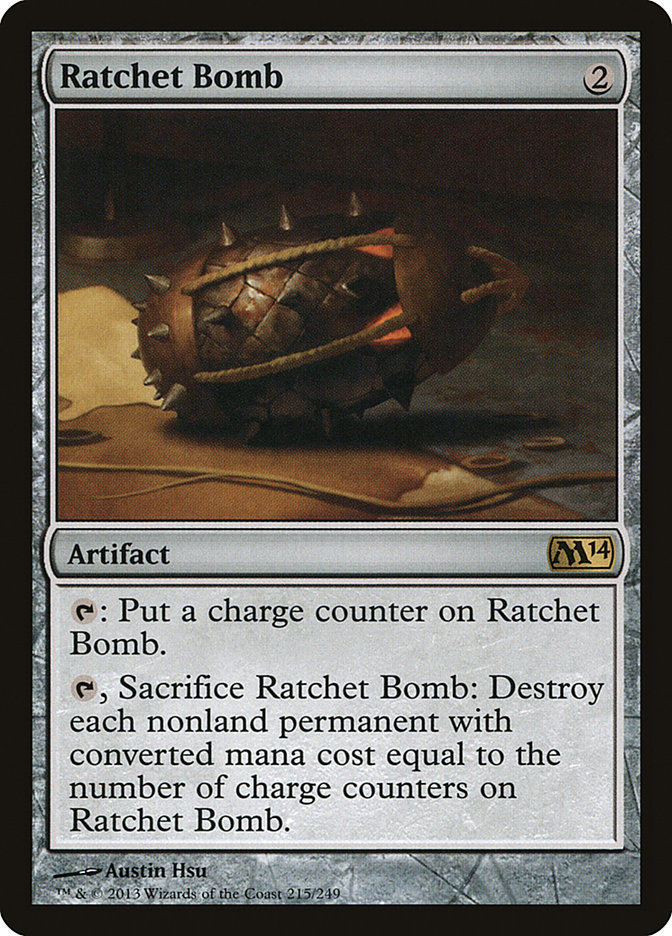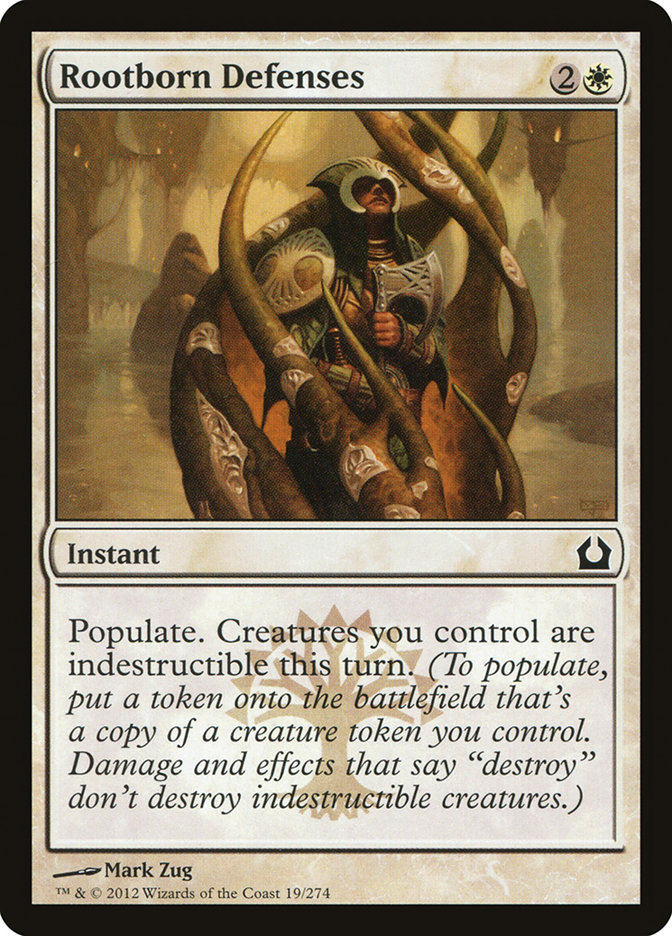I’m in a bit of a bind here. Standard is the only relevant format, but I can’t talk about anything non-public there before the Pro Tour. Instead of something new, I’m going to do something I know I’m good at: breaking down known formats.
There have been two events laying out the new Theros Standard format, each with drastically different results.
Week #1:
Half the Top 8 of the StarCityGames.com Standard Open in Worcester is Sphinx’s Revelation control. About a third of the Top 32 decks are.
Week #2:
Zero of the Top 8 decks of the StarCityGames.com Standard Open in Cleveland are Sphinx’s Revelation control. Two of the Top 16 decks are.
This is not an accident or simple luck of the draw. This is not a regional metagame difference like we see in Legacy all the time. There are very distinct reasons why blue control performed so well the first week and barely put up results the second.
Why Sphinx’s Revelation Was Good
Going into the first week, the metagame was the same three-pronged one from Return to Ravnica Block Constructed. You had G/W-based decks that ranged from aggro to small midrange, you had hyperaggressive mono-red decks, and you had Sphinx’s Revelation.
First of all, why did nothing change?
One issue was that the decks as they existed were very powerful good-card decks. It’s hard to outclass red on the beatdown end with free 2/2s on two and a ton of two-power one-drops; it’s hard to outclass G/W on the bigger cheap dudes front, especially when 5/5 gets punished by Selesnya Charm; and it’s hard to outclass Sphinx’s Revelation on the go-big control front. Most of the obviously powerful cards in Magic 2014 and Theros also lined up with these strategies—Firedrinker Satyr; Lightning Strike; Chandra’s Phoenix; Fleecemane Lion; and Elspeth, Sun’s Champion all come to mind here.
The other big thing was that the mana didn’t get significantly better. Last year the shock lands and full set of buddy lands drastically improved the mediocre Innistrad block mana that strained to support any three-color decks. This year, while Temples are clearly more powerful than Guildgates, they don’t significantly extend the subset of cards a deck can cast or solve problems about playing early drops the way something like M10/Innistrad buddy lands would.
Moving on to the matchups in the pre-defined metagame, Sphinx’s Revelation smashed the G/W decks. Voice of Resurgence was a good card, but the other 56 cards were pretty mediocre. Most embarrassing was the interaction between Far // Away and G/W’s eight token creatures. While a 3/3 for two and a 5/5 flash trample for four are both great rates, they look much worse when they turn on five-mana blowouts. Even in the games you had a Voice, they could easily ignore it, play Blood Baron of Vizkopa, or just have Detention Sphere.
In return, G/W stomped Mono-Red Aggro. Not only could they present a ton of blockers to overload a Firefist Striker, but they could just come out of the gates and kill the red deck a decent amount of the time. Even beyond the unimpressive game 1 matchup, there was really no way for red to beat Trostani, Selesnya’s Voice or Unflinching Courage. It’s also not like those cards are red-specific hate; G/W would pack those to win mirror matches even if people weren’t attacking with Rakdos Cacklers. To paraphrase current number one-ranked player Josh Utter-Leyton on his Pro Tour Dragon’s Maze semifinals loss: "I’m pretty sure Wescoe’s post-board deck is what I would build if I were playing all ten rounds against red."
To complete the Rock-Paper-Scissors triangle, you would expect Mono-Red Aggro to smash Esper Control. This was not really the case. Yes, Mono-Red Aggro was good against Esper Control, but that was only because Esper was slightly less than 50% to cast Supreme Verdict on turn 4. Sometimes red would kill Esper on turn 4 on the play and avoid the sweeper, but at the same time sometimes red would mulligan and lose to spot removal or draw a hand that folded to Detention Sphere on multiple targets or couldn’t kill before Blood Baron took over.
The final question was how does Esper Control handle new decks? Too often a control deck is finely tuned to compete against a specific set of threats and can’t handle recent releases. Esper Control was not that deck. Instead, Esper Control was a deck loaded with near universal answers (Away your Fleecemane Lion, Hero’s Downfall your Domri Rade, Detention Sphere your anything), dominant threats (Blood Baron versus the world usually favors Baron), and of course Sphinx’s Revelation. If your deck was not churning on all cylinders at all times, they would catch a break and end you. In a world where people play a lot of bad, untuned decks the first week of a new format, this also meant Esper could capitalize.
To put it in the simplest way possible, in the Magic Online Block metagame of 50% Mono-Red Aggro, 20% G/W, 30% Esper Control, I still felt Esper Control was the right deck to play.
What Happened Week #1
Esper Control did very well—as expected—but fell short of the title.
The big development was that a Mono-Red Aggro benchmark was established that had way better game against Esper Control. Having tested a lot of the matchup, I can tell you that the current red lists present a much bigger issue for control than previous ones. The addition of Chandra’s Phoenix and Mutavault means that a Supreme Verdict hardly locks up a game, and replacing the always-dead Mizzium Mortars or the blowout prone Rubblebelt Maaka with real burn means every spell the red deck draws is live.
Doom Bladeing down the red deck does not work. The one-mana removal options in this format are too limited to trade for them at tempo (see also why Yoked Ox made the finals). They get ahead of you on ticks and run you over before you can play your answers unless you have a sweeper.
Fortunately, the answer to this issue was also found the first week. The U/W deck Max Tietze played is fairly well suited to defeating Mono-Red Aggro. You have two additional sweepers maindeck in Ratchet Bomb, Divinations to help ensure you hit the Verdict and mana to cast it on turn 4, and less painful mana to stay out of Lightning Strike range.
The best part of these innovations is that they were also fine against the rest of the metagame. Yes, you lost a bit in the mirror without access to Thoughtseize or Sin Collector, but Ratchet Bomb was fine against G/W. Their creatures almost all cost two, one, or zero, putting them right in range of going tick, tick, boom.
Looking deeper at the results, we confirm our previous note that a lot of untuned decks showed up that really had no shot against Esper Control. G/R has good cards against Esper, but on a fundamental level you are a bunch of four-drops against a blue deck. That’s a lesson we’ve learned time and time again since Serra Angels backed by Stasis ruled the skies. The White Weenie deck that Ross Merriam played has some nice parts, such as Boros Charm for Supreme Verdict, but if you take a closer look, it’s just a smaller version of the G/W deck that, guess what, folds to Esper Control.
As for the B/R decks . . . you have to be kidding me.
What Happened Week #2
Adrian Sullivan talked about the "Standard squeeze" last week. He isn’t wrong. Midrange is in a bit of a Scylla and Charybdis trap between having the interaction to beat Mono-Red Aggro and the resilient threats and disruption to beat Esper Control.
The thing he didn’t mention is that Mono-Red Aggro puts Esper Control in the same squeeze.
The Mono-Red Aggro problem was a big, glaring one. The problem was solvable in archetype (see: Ronnie Ritner’s Returned Phalanx). The problem is that resolving the issue warps your deck drastically. The two Sphinx’s Revelation decks in the Top 16 of the Cleveland Open had a total of two Far // Aways, and one of those was in a sideboard. Without that card, you are learning heavily on Supreme Verdict to push ahead on cards before the point where Sphinx’s Revelation hits critical mass.
The problem is that leaves you vulnerable to G/W’s tools.
First of all, Rootborn Defenses is now way better than it was in Block. Not only has Esper Control cut Far // Away, forcing them to Supreme Verdict back into a game, but they have also cut the maindeck Sin Collectors. They aren’t wrong to do so, but you can no longer pluck the Rootborn Defenses, sweep, and take over. You are now forced to play into their blowouts instead of having the ability to sculpt the game however you want.
Of course, there are still times where holding up Rootborn Defenses is awkward for the G/W deck. Think about the old Neck Snap or Divine Verdict dilemma in Limited. They just don’t cast their Verdict and do something else, and you sit there looking dumb with the same board state as before that may not be enough to finish the job.
To solve this issue, Erik Finnegan’s list played eleven flash creatures to back its counterspell. As strange as it is to think about, the G/W deck is now playing the "blue" flash deck’s role in the flash versus tapout match. As we’ve seen time and time again, this rarely ends well for the person who has to play their answers before the person with threats decides to respond.
Adding all of these to the fact that G/W has a fair share of naturally Verdict-resistant threats between Voice of Resurgence, Experiment One, and indestructible Fleecemane Lions (note: another thing to do with unused Rootborn Defenses mana) and suddenly you can see why Esper Control found itself floundering in a previously great matchup.
The loss of high-impact, expensive cards also hurt the midrange matchup a bit, but that alone wouldn’t be enough to flip the matchup. However, at the same time, midrange decks got super spiteful. While I have no idea how Andrew Morrow’s deck actually beats Mono-Red Aggro game 1, it sure is pre-boarded against control with seven discard spells. Dan Musser Junk deck has less discard but instead has Voice of Resurgence and flash guys. Both lists also have the Whip of Erebos plus Obzedat, Ghost Council interaction that requires the Esper deck to immediately have an instant-speed answer . . . which they are all cutting. Unlike Advent of the Wurm, you can’t afford to just take a hit for five and Verdict away the 5/5 a turn later.
Actually, thinking about it some more, I don’t even know how you are supposed to kill Ghost Council the first time around if it resolves.
Where To Go From Here
Don’t get me wrong. Esper Control is still a good deck. It’s not like Sphinx’s Revelation became a bad card overnight. It still is Cruel Ultimatum with flash. This just means that Esper is a normal control deck with normal control deck problems.
Wizards has spent a lot of time trying to balance threats and answers, and the pendulum is always swinging in one direction or the other. We’ve just come off a push back against powerful generic answers like Mana Leak. For the past year, we’ve been in a world where threats are unconditionally better than answers. Cavern of Souls on Beast casting a Thragtusk was not something there was a one-for-one answer for, and Huntmaster of the Fells wasn’t much easier to handle. There were a lot of parallels to the Standard where Bloodbraid Elf was the massively dominant deck, where despite having access to Cruel Ultimatum control was hard pressed to not just fall behind to incremental advantage earlier in the game.
We also aren’t on the Cryptic Command side of things, where the answers just stop anything at value. Things are starting to stabilize near dead even. While the generic answers have been pushed up the curve, they still exist at three mana. The threats aren’t unconditional value, but they have other ways to interact profitably with removal like flash, protection from colors, or haste.
In order to succeed, a deck in this format has to . . .
Wait, you almost had me there.
T-minus three days until reveal and counting.





